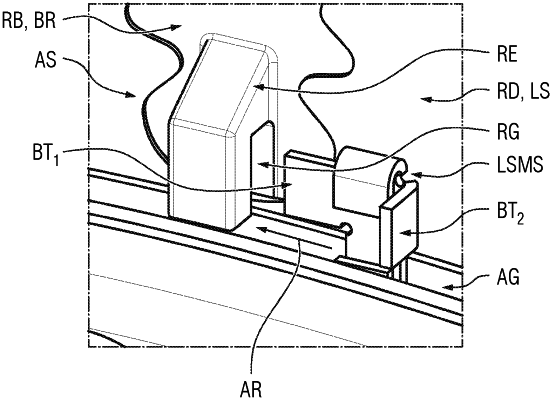| CPC F01D 5/3015 (2013.01) [F01D 5/3007 (2013.01); F01D 5/326 (2013.01); F04D 29/322 (2013.01); F04D 29/34 (2013.01)] | 7 Claims |

|
1. A rotor arrangement (RA) for a rotor of a gas turbine, comprising
at least one rotor disk (RD) comprising
a plurality of axially extending attachment slots (AS) along its outer periphery (OP) for carrying rotor blades (RB) and
a lateral surface (LS) with an annular groove (AG) having an annular opening towards the outward direction, the annular groove (AG) being arranged radially inwardly of the attachments slots (AS) and
a plurality of rotor blades (RB), wherein each rotor blade (RB) comprises an airfoil (AF) and a blade root (BR), each rotor blade (RB) is assembled with its blade root (BR) in one of the plurality of the attachment slots (AS),
wherein each of the assembled blade roots (BR) comprises a root extension (RE) with a root groove (RG), said root groove (RG) facing the annular groove (AG) when the rotor blade (RB) is assembled in the attachment slot (AS), and
wherein for each assembled rotor blade (RB) a locking element is provided, a main body of the locking element engaging the annular groove (AG) of the rotor disk (RD) and the root groove (RG) of the respective rotor blade (RB),
characterized in that at least one of the locking elements is embodied as a locking sheet metal strip (LSMS), which comprises the main body (MB) and two lateral tongues (BT), the two lateral tongues (BT) extending axially from the main body, thereby embracing the respective root extension (RE), and
wherein the two lateral tongues (BT) are each bent around a respective radially extending bending axis (BA) to thereby embrace the root extension (RE) of the corresponding rotor blade (RB).
|